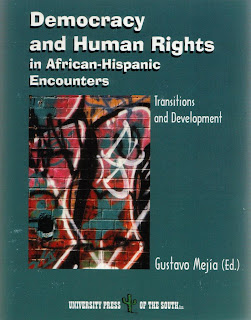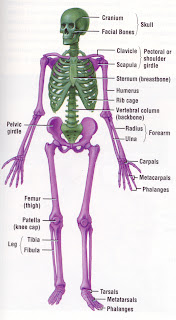
DEMOCRACY
Democracy is a form of government in which all people have an equal say in the decisions that affect their lives. Ideally, this includes equal participation in the proposal, development and passage of legislation into law. It can also encompass social, economic and cultural conditions that enable the free and equal practice of political self-determination. According to some theories of democracy, popular sovereignty is the founding principle of such a system. However, the democratic principle has also been expressed as "the freedom to call something into being which did not exist before, which was not given and which therefore, strictly speaking, could not be known." This type of freedom, which is connected to human "natality," or the capacity to begin anew, sees democracy as "not only a political system" an aspiration, really, intimately connected to and dependent upon a picture of what it is to be human—of what it is a human should be to be fully human."
While there is no universally accepted definition of 'democracy', equality and freedom have both been identified as important characteristics of democracy since ancient times. These principles are reflected in all citizens being equal before the law and having equal access to legislative processes. For example, in a representative democracy, every vote has equal weight, no unreasonable restrictions can apply to anyone seeking to become a representative and the freedom of its citizens is secured by legitimized rights and liberties which are generally protected by a constitution.
There are several varieties of democracy. Some of which provide better representation and more freedom for their citizens than others. However, if any democracy is not structured so as to prohibit the government from excluding the people from the legislative process or any branch of government from altering the separation of powers in its own favor, then a branch of the system can accumulate too much power and destroy the democracy. Representative Democracy, Consensus Democracy and Deliberative Democracy are all major examples of attempts at a form of government that is both practical and responsive to the needs and desires of citizens.
Many people use the term "democracy" as shorthand for liberal democracy, which may include elements such as political pluralism, equality before the law, the right to petition elected officials for redress of grievances, due process, civil liberties, human rights and elements of civil society outside the government. In the United States, separation of powers is often cited as a central attribute but in other countries such as the United Kingdom, the dominant principle is that of parliamentary sovereignty. In other cases, "democracy" is used to mean direct democracy. Though the term "democracy" is typically used in the context of a political state, the principles are applicable to private organizations and other groups as well.
 Majority rule is often listed as a characteristic of democracy. However, it is also possible for a minority to be oppressed by a "tyranny of the majority" in the absence of governmental or constitutional protections of individual or group rights. An essential part of an "ideal" representative democracy is competitive elections that are fair both substantively and procedurally. Furthermore, freedom of political expression, freedom of speech and freedom of the press are considered to be essential, so that citizens are adequately informed and able to vote according to their own best interests as they see them. It has also been suggested that a basic feature of democracy is the capacity of individuals to participate freely and fully in the life of their society.
Majority rule is often listed as a characteristic of democracy. However, it is also possible for a minority to be oppressed by a "tyranny of the majority" in the absence of governmental or constitutional protections of individual or group rights. An essential part of an "ideal" representative democracy is competitive elections that are fair both substantively and procedurally. Furthermore, freedom of political expression, freedom of speech and freedom of the press are considered to be essential, so that citizens are adequately informed and able to vote according to their own best interests as they see them. It has also been suggested that a basic feature of democracy is the capacity of individuals to participate freely and fully in the life of their society.Democracy has its formal origins in Ancient Greece but democratic practices are evident in earlier societies including Mesopotamia, Phoenicia and India. Other cultures since Greece have significantly contributed to the evolution of democracy such as Ancient Rome, Europe and North and South America. The concept of representative democracy arose largely from ideas and institutions that developed during the European Middle Ages and the Age of Enlightenment and in the American and French Revolutions. Democracy has been called the "last form of government" and has spread considerably across the globe. The right to vote has been expanded in many jurisdictions over time from relatively narrow groups with New Zealand the first nation to grant universal suffrage for all its citizens in 1893. Democracy is often confused with the republic form of government.
Parliamentary democracy is a representative democracy where government is appointed by representatives as opposed to a 'presidential rule' wherein the President is both head of state and the head of government and is elected by the voters. Under a parliamentary democracy, government is exercised by delegation to an executive ministry and subject to ongoing review, checks and balances by the legislative parliament elected by the people. Parliamentary systems have the right to dismiss a Prime Minister at any point in time that they feel he or she is not doing their job to the expectations of the legislature. This is done through a vote of no Confidence where the legislature decides whether or not to remove the Prime Minister from office by a majority support for his or her dismissal. The Prime Minister can also call an election whenever he or she so chooses. Typically the Prime Minister will hold an election when he or she knows that they are in good favor with the public as to get re-elected.































